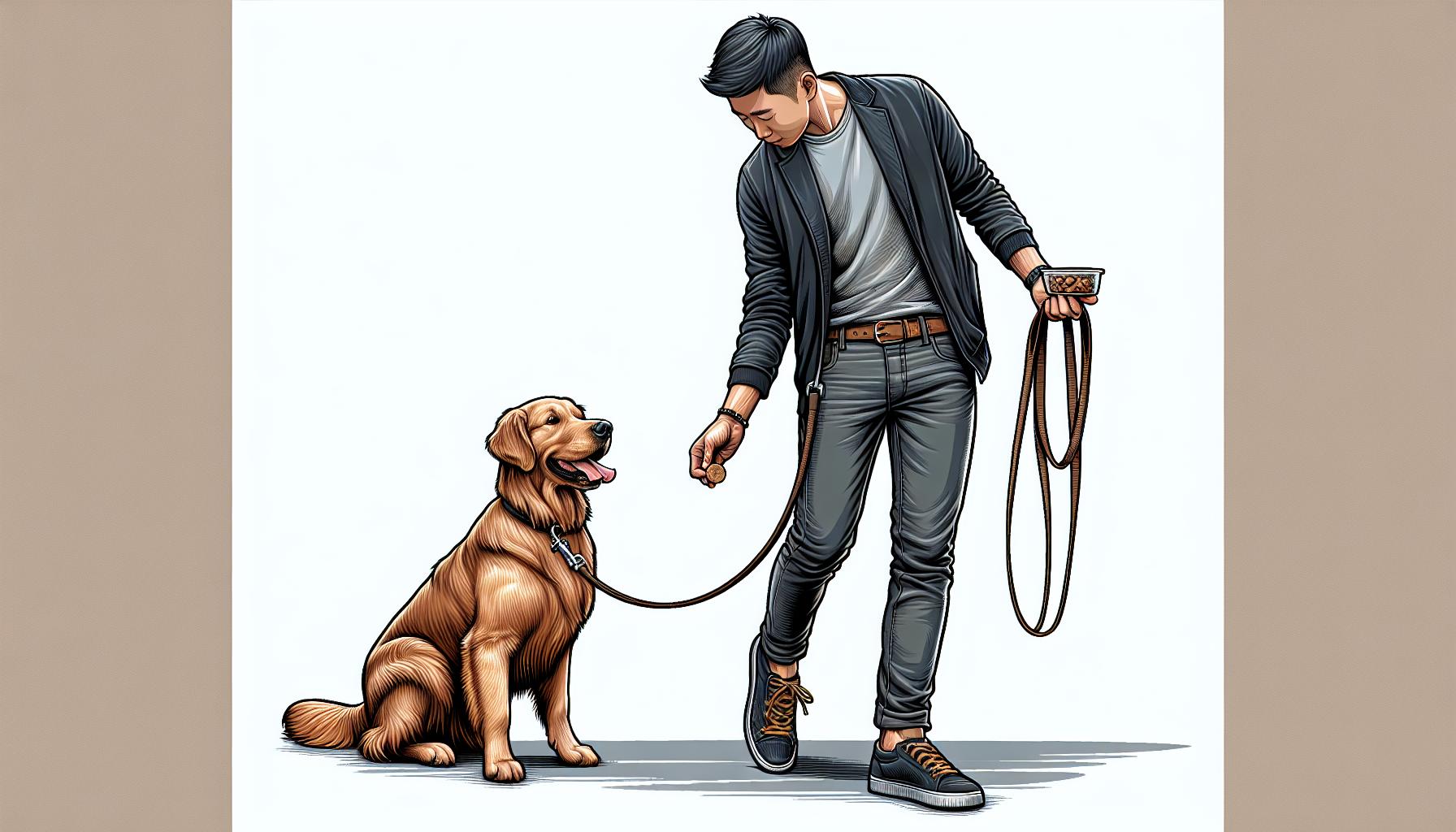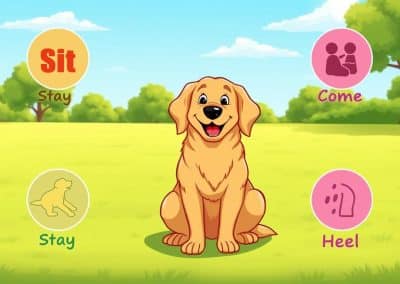Stop Leash Pulling for Golden Retrievers. Walking your golden retriever should be a joy, not a tug-of-war. If you’re like me, you’ve probably experienced that heart-sinking feeling when your furry friend starts pulling on the leash, turning a peaceful walk into a battle of wills. It’s a common issue, but thankfully, one that can be resolved with the right approach.
I’ve been down this road and have gathered some tried-and-true solutions to transform those chaotic walks into serene strolls. Whether your golden is a puppy with boundless energy or an adult with a mind of their own, I’ll share insights that can help you both enjoy your time outdoors. Let’s dive into the world of leash training together and make those walks something to look forward to again.
Understanding Leash Pulling Behavior
Before I delve into the solutions to leash pulling, it’s crucial to understand why golden retrievers exhibit this behavior in the first place. My journey with my golden retriever taught me that their enthusiasm and energy are often misinterpreted as disobedience. In reality, golden retrievers are bred to work closely with humans, possessing a strong desire to explore and please.
From puppyhood, these dogs are curious about the world around them. When they pull on the leash, it’s not necessarily an act of defiance but rather an expression of their excitement or anxiety. Recognizing this has been a game-changer for me. It helped me approach the issue with empathy and patience.
- Over-excitement: Golden retrievers get easily excited by the sights, sounds, and smells during walks.
- Lack of training: Without proper leash training from a young age, they don’t learn the correct walking etiquette.
- Seeking attention: Sometimes, it’s their way of seeking more interaction with their owner.
Understanding these triggers has allowed me to tailor my approach to training and managing my golden retriever’s leash pulling habit. By recognizing the root cause, I’ve been able to develop strategies that not only address the behavior but also strengthen our bond.
Training Techniques for Golden Retrievers

When tackling leash pulling with my golden retriever, I’ve found that patience and consistency are key. It’s not just about stopping the unwanted behavior but rather teaching them what we want them to do instead. Here’s a breakdown of strategies that have proven effective for us.
Positive Reinforcement
I’ve always believed in the power of positive reinforcement. Whenever my golden walks nicely on a leash, I make sure to reward them promptly. This could be treats, praise, or a quick play session. The trick is to make walking by my side the best option available to them.
The Redirection Technique
Redirecting their attention is another tactic I’ve employed successfully. When I sense my dog is about to pull, I’ll change direction abruptly. This not only prevents pulling but also teaches them to pay close attention to me during walks.
Implementing the “Stop-and-Go” Method
One of the most effective methods I’ve used is the “stop-and-go” technique. I start walking, and the moment my golden pulls, I stop. I don’t move again until there’s slack in the leash. It didn’t take long for them to realize that pulling means we don’t go anywhere.
Consistent, Short Training Sessions
Consistency is crucial, so I incorporate these techniques into our daily walks. Short, frequent training sessions have been more effective than longer, sporadic ones. It keeps both of us focused and prevents frustration.
Incorporating these techniques into our routine hasn’t just improved leash manners; it has also strengthened our bond. Understanding and patience turned what could be stressful walks into enjoyable outings for both of us.
Tools and Equipment to Aid in Leash Training

In my journey to tackle leash pulling with my golden retriever, I’ve discovered a few key tools and equipment that have made a significant difference. It’s crucial to remember that no single tool is a magic solution. Instead, it’s about finding what works best for your golden retriever and leveraging it to complement your training strategies.
First on my list is a no-pull harness. Unlike standard harnesses that can actually encourage pulling, no-pull harnesses have a unique design that discourages the behavior. They typically feature front attachment points, which gently steer your dog to your side when they try to pull ahead, making it an essential tool in my leash training arsenal.
Next, a head collar can offer even more control for those exceptionally eager retrievers. It fits around the dog’s head and snout, allowing for gentle direction control. I’ve found it invaluable for managing my golden’s focus and direction during our training sessions. However, it’s important to introduce a head collar gradually, ensuring your dog is comfortable and not stressed by it.
Lastly, investing in a quality leash cannot be overstated. A sturdy, comfortable-to-hold leash gives you the confidence and control needed during training. I prefer a standard 6-foot leash because it provides ample space for movement but is still short enough to manage control easily.
Remember, introducing any new tool should be a positive experience for your golden retriever. Use plenty of treats and praise to associate the new equipment with happy training sessions. This not only helps in easing your dog into the use of these tools but also builds a stronger bond between you two.
Consistency is Key

When tackling the challenge of leash pulling with my golden retriever, I’ve learned that consistency is paramount. It’s not just about having the right tools, like a no-pull harness or a head collar; it’s about using them consistently every time we head out for a walk. This repetitiveness helps my dog understand what’s expected of him, making the training process much smoother and faster.
I make it a point to follow the same routine every day. Whether it’s putting on the harness the same way, using the same commands, or sticking to a familiar route at first, these consistent actions signal to my golden that it’s time to focus and behave. It might seem simple, but this routine sets the stage for successful leash training.
Another aspect I can’t overlook is consistency in my reactions to his behavior. If he starts to pull, I stop moving until he calms down. I never let him lead me, no matter how slight the tug. This clear and consistent response teaches him that pulling won’t get him where he wants to go. Instead, by staying calm and collected, he’ll learn that good behavior has its rewards, like praise, treats, or continued walking.
By keeping these principles in mind, I’ve seen significant progress in my golden’s leash manners. It’s a journey that requires patience and persistence, but I’m confident that with continued effort and consistency, we’ll master this essential skill.
Conclusion
I’ve found that patience and consistency are truly the keys to overcoming leash pulling with golden retrievers. By incorporating the right tools like no-pull harnesses or head collars and sticking to a daily routine, we set a clear expectation for our furry friends. Remember, every walk is an opportunity to reinforce these lessons. Rewarding their good behavior not only encourages them but also strengthens our bond. Let’s stay committed to our training methods, and soon enough, we’ll enjoy peaceful, enjoyable walks together.









